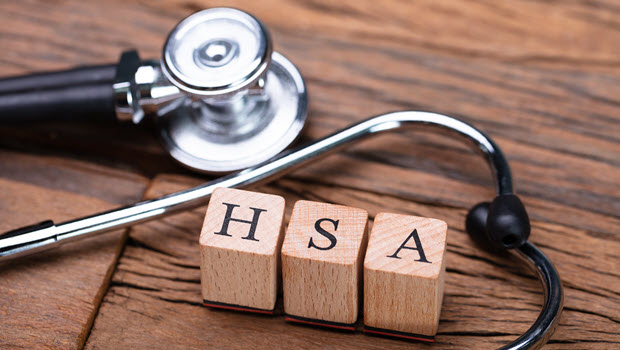Love a medical mystery?
A teacher’s family member was paying for routine medical care with a health savings account debit card. Within months, the entire account was drained, but the bills kept coming—even though the teacher had a great insurance plan.
“We found that the family member was paying the healthcare provider upfront, and no insurance claims were being submitted,” says insurance specialist and CEA UniServ Representative Tom Lally. “So none of the expenses were being counted against the deductible.”
Lally, who gives free presentations to help CEA members make the most of their HSAs, recouped more than $3,000 in insurance payments this teacher was owed.
“Tom presented at our fall county forum and showed members how to use their HSAs to their fullest potential and how to avoid common pitfalls,” said New Haven County Director and Waterbury math teacher George Flaherty. “My colleagues left the meeting talking about how they were going to maximize their contributions, look at investment options, track medical appointment mileage, and save receipts from sunscreen, Band-aids, and other qualifying purchases for future reimbursements when cashflow is needed. I’ve already heard from several colleagues about scheduling this presentation again.”
Lally’s workshop, updated to include the most current rules and legislation, covers everything from qualifying health expenses to tax implications, special contribution increases for married individuals, rules and exceptions for veterans, bridges to Medicare, using IRA accounts to fund your HSA, surprising ways to save money on prescriptions—including whether and when coupons are actually a good deal, and much more.
Lally shares a few tips here.
Know what qualified expenses are.
The IRS definition of medical and dental expenses is broad and includes the costs of legal medical services and equipment to diagnose, cure, mitigate, treat, or prevent disease. Many HSA administrators—that is, your HSA bank—have excellent online resources to quickly look up eligible expenses. Since the passage of the CARES Act, reimbursable expenses now include menstrual care/feminine hygiene products and over-the-counter drugs. (Vitamins are still not included unless prescribed.)
Reconcile your transactions.
Always make sure your HSA transactions match what’s being run through insurance.
“After working with a member, we found that their provider wasn’t sending claims to the carrier, but payments were being made out of the HSA,” Lally explains. “The member paid thousands more than required. Try not to pay for medical services before receiving the explanation of benefits from your insurance company and your medical provider’s bill.”
Shop around.
“Every insurance carrier has online pricing tools to help you search for providers, medical costs, and pharmacy costs,” says Lally. “Use these to pay the least without sacrificing quality of care.”
Place of service matters, he adds. “Whenever possible, get your non-emergency-based labwork, imaging, and outpatient surgical procedures at freestanding facilities, which can cost much less than hospital settings.”
When it comes to offsetting prescription costs, drug manufacturers can help.
“If you have a high-cost prescription, contact the manufacturer to see if you qualify for financial assistance,” Lally recommends. “Some plans will even apply the manufacturer’s payment toward your deductible and maximum out-of-pocket, so check with your plan for details.”
Discount programs such as GoodRx can also save you money. Whatever you end up paying out of pocket could be reimbursed by your insurer, so contact them for a claim reimbursement form. Most pharmacies will not run these costs through your insurance, but most insurance plans will process your reimbursement form and apply your out-of-pocket costs to your deductible and maximum out-of-pocket.
A word of caution from Lally: “Don’t let coupons and discounts make your drug choice for you, especially for ongoing prescriptions. When a discount ends, you could find yourself paying more and putting your body through some turbulence by moving to a different medication.”
Consider investing.
A 2020 Vanguard report found that only 50% of people eligible for an HSA contribute to it, only 14% contribute to the allowable maximum amount, and just 5% of HSA owners take advantage of the account’s investing benefits. Although not every HSA bank has investment options, many do—and any money you earn in investments is untaxed if the funds are used for eligible expenses.
Some financial advisors recommend fully funding your HSA and letting that account grow for retirement. They encourage using post-tax dollars to pay for eligible expenses. If you pay for an eligible expense with non-HSA money (for example, using cash, a personal check, or a personal credit card), you can always pay yourself back with HSA funds as long as you were enrolled in a high-deductible health plan and your HSA was active when the expense was incurred.
Contribute as much as you can.
There is no “use it or lose it” danger when it comes to HSAs. Funds don’t go away until you spend or withdraw them, and they can be used for ongoing healthcare costs in retirement, as well as Medicare Parts B and D. When you’re retired and 65 or older, you can withdraw from your HSA for non-eligible purposes without penalty; you simply pay taxes on those withdrawals, just like you would on most IRAs or 403(b) and 401(k) funds.
Reach out to your local president to schedule an in-person presentation with Tom Lally.







